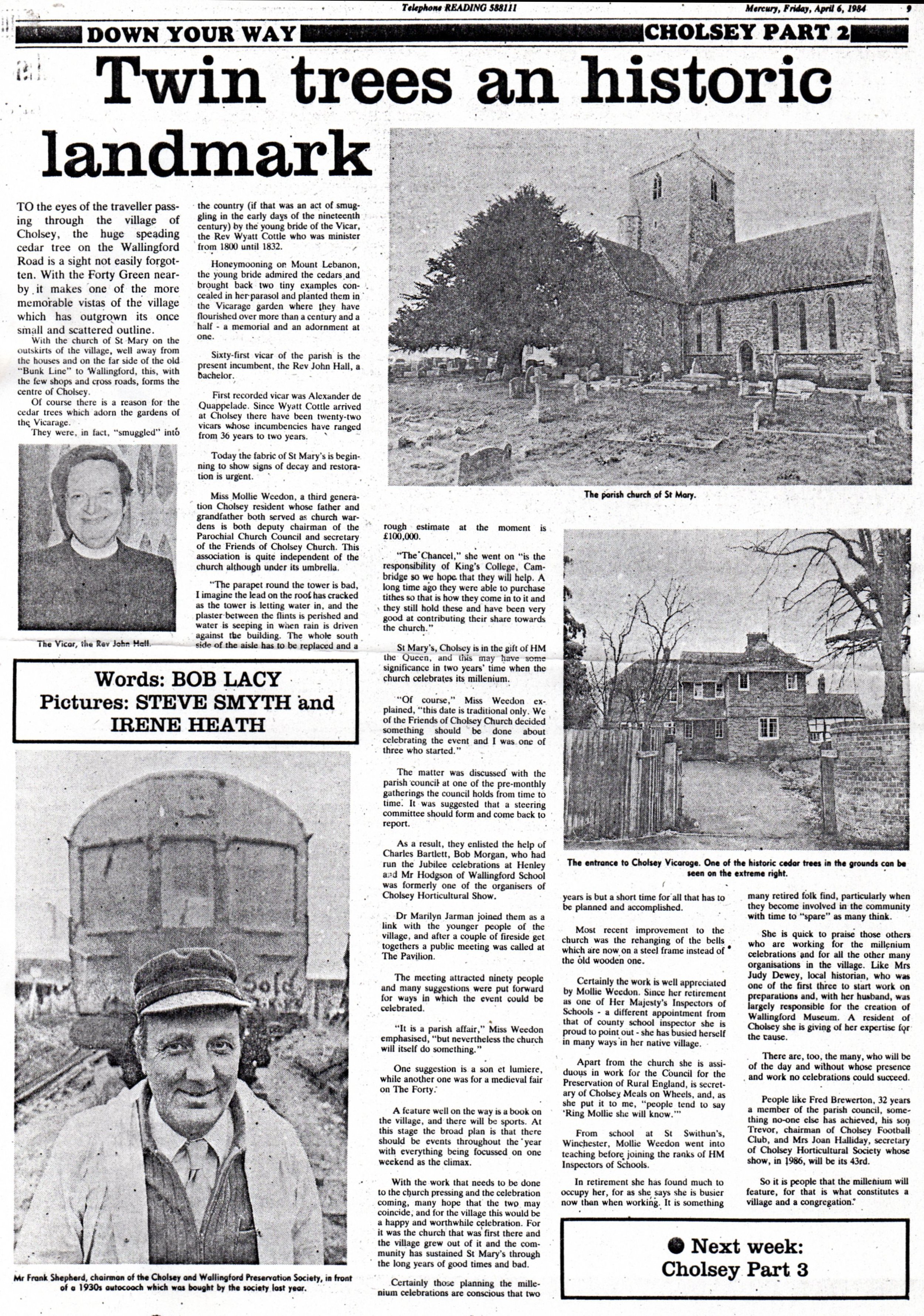PLACES
Three images from the Reading Mercury of March 1984 contain a 'potted' history of Cholsey. Although not every detail can be taken at face value it makes interesting reading as a springboard to further investigation.
The magnificent Cedar of Lebanon, which grew for many years at The Vicarage (now The Old Vicarage). The tree was cut down in the late 1980s, supposedly due to ill health: there were conflicting reports on the matter. The tree was believed to have been planted by the wife of Rev Wyatt Cottle in about 1817.
Probably from the 1930s, an interesting view of the church and its surroundings, including the house which once stood at the north-east corner of the church yard.
A crisp view of The Forty, in the 1950s, showing Pound Farm house (timbered, to the right) and the bottom of Ilges Lane.
Believed to be a Henry Taunt photo of about 1900, this excellent view of the cottages on The Forty recalls simpler times.
From an excellent drawing, this fascinating image of St Mary's, Cholsey, from the NE shows that the roof of the nave (right) had already been lowered. It also suggests alterations to the roofs of the chancel and north transept.
Honey Lane in about 1910, very near the Free Church (out of shot on left). The cottages on the right stand on or near the site of the Forge: Paternoster Lane is just behind the children.
It was suggested that this event was a formal tea, given after the fund-raising efforts on Hospital Sunday. Clothing suggests a date of about 1910 but there are contra-indications The venue was the Memorial Hall, which was where the telephone exchange now stands.
A 1950s wedding reception at the Memorial Hall. Sadly none of those attending has so far been identified.
The nave is handsome in this 1967 view of St Mary's. Note the position of the font (dating from about 1955), the organ, the dignified (if uncomfortable) pews, the Lay Reader's lectern and the cast-iron heating vents in the floor. (Colin F. Stewart)
Probably another of Henry Taunt's photos of about 1906. Sawyer's drapery on the left. The Beehive pub centre, plus houses recognisable today: also thatched cottages beyond The Beehive. The shop was later taken over by Violet Hearmon (a notable teacher at Cholsey School) and her mother.
Cholsey & Moulsford East signal box, which once stood on platforms 2 and 3 of the station. There was once also a West signal box at the Moreton end of the platforms.
View along Station Road to The Forty in about 1906. The front of the Swan pub can be seen on the left.
Bride Elsie Gardner with her father Cecil Gardner in March 1936. She married Reg Mills. The bridesmaids (L to R) are Esme Norris, Joyce Gardner, Kath Gardner and Dorothy Mills. Note the wooden house which once stood at the edge of the churchyard.
Members of the Garlick and Carter families in West End in about 1930 This stretch (from the end of Sandy Lane to the allotments) has been a paved road since the 1960s.
Little Stoke ferry, Fair Mile hospital in the background.















